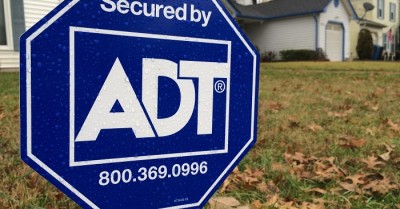As conservatives predicted, the increase in concealed carry permits and gun ownership in the United States has reduced the overall crime rate. While criminals own guns, too, few want to get involved in an armed confrontation. They want to be able to intimidate their intended victims and get away with whatever they can. The last thing they want is to actually use their guns as more than a threat.
However, results are not uniform across the country. As gun laws vary from state to state, so do crime statistics. Those states with restrictive gun ownership laws generally have higher crime rates than states which don’t, but even in states where many people have guns, there are still criminals who are stupid enough to try — hoping that they won’t run into someone carrying concealed. Not all criminals are intimidated by gun-carrying civilians, counting on their superior ability to take the day.
One way that crimes can still be on the rise is in home burglaries … even in areas with high gun ownership. This is probably attributed to the timing of these burglaries, with most of them happening when nobody is home. Who is watching your house when nobody is there?
Ultimate Tactical Self-Defense And Hunting Weapon That Doesn’t Require A Firearms License!
If there is no one watching your home, it can easily become a target. With more than 2 million burglaries a year, chances are that your home will be targeted at some point. Anything you can do to reduce that likelihood is a good idea, especially if those ideas are inexpensive.
1. Be Sure to Lock Doors and Windows
This one may seem simplistic, but a full third of the burglaries committed in the country are considered “unlawful entry” rather than “forced entry.” The difference is that in that third of the cases, the criminal didn’t have to force their way in. All they had to do was open a door or window that was unlocked. Since burglars don’t want to attract attention, making sure that your doors and windows are locked is a great way of helping reduce the likelihood that someone will get int.
2. Put Up an Alarm Sign
Alarm systems are expensive. Then, on top of the installation cost, you’ve got the monthly service contract that you’ve got to pay. That puts them beyond most people’s budget. But that doesn’t mean you can’t benefit from home alarm systems. All you need is a sign.
Keep your eyes open for someone who is moving out, that has a burglar alarm service. They will usually have a sign on the front lawn, saying “Protected By: XYZ Alarms.” When you find someone like that, ask them if you can have their sign. They aren’t going to need it anymore, so that shouldn’t be all that hard. Buying them a cup of coffee might even help them decide to give it to you.
Display your newly acquired sign on your front yard, being sure to place it as you’ve seen such signs displayed at other homes. You don’t want to be overly obvious, but you want it seen. If you have planters beside the front door, that’s a good location.
3. Put Up a Different Sign
If you can’t find a burglar alarm sign, that doesn’t meant that you can’t benefit from having a sign in front of your home. There are a number of wonderful signs around which humorously talk about the owner being armed and ready to protect their home. Any criminal is going to want to avoid those homes, because they want to avoid getting into a shootout with the owner.
From the criminal’s point of view, a shootout is a no-win situation. Either they’ll get you, in which case they get charged with second-degree murder (or attempted second-degree murder if they don’t manage to kill you) or you get them, in which case they could end up dead. So, that’s a really big line to cross, which most burglars will work hard to avoid.
4. Get a Noisy Dog
 Everyone complains about the noisy dog in the neighborhood — the one that barks at everything. But that dog is just doing its job. It’s warning its owners that someone is there, someone who probably shouldn’t be.
Everyone complains about the noisy dog in the neighborhood — the one that barks at everything. But that dog is just doing its job. It’s warning its owners that someone is there, someone who probably shouldn’t be.
Criminals want to avoid attention. When people look, they notice and some will remember. That increases their chances of being caught. So, when a dog starts barking, they are likely to decide it’s a good time to be elsewhere.
5. Remove Shrubbery
If you’ve got shrubbery below, next to or partially covering your windows, you should remove it. That shrubbery provides a perfect place for break-in artists to hide while they are checking to see if your windows are unlocked. Removing it increases the risk for the criminal.
There’s nothing wrong with having shrubs; it’s just how they are placed. Transplant those shrubs to a spot between the windows, so that it doesn’t make a good hiding place. Then you can put flowers or something else low to the ground under the windows.
6. Leave a Car Parked Outside
Most burglaries happen during daylight hours, while everyone is away at work and school. That’s a relatively safe time for burglars to break in, because they are less likely to encounter anyone. But before breaking in, most burglars take the time to “case” a home, trying to determine if it is safe to enter.
Vicious New Hand-Held Self-Defense Tool Turns Lethal In Seconds!
One of the things they look for is cars. If you have a car parked in your driveway, it indicates that someone is home. So, if you happen to have an old junker that you haven’t gotten rid of yet, don’t hide it in the backyard. Instead, park it in the driveway. Or, if one family member isn’t using their car, make sure it’s outside, rather than hiding it in the garage. That will tend to send those criminals elsewhere, looking for a house that is less likely to have anyone home.
7. Add Security Striker Plates
The most common entry point for criminals is through the front door. Most homes have a deadbolt on the door, in addition to a normal door lock. Homeowners think that makes their door secure, but in reality it doesn’t. An average sized man can kick open a dead-bolted door easily.
The weakness isn’t in the deadbolt, but in the door frame that the deadbolt goes into. By putting in a security striker plate, which is larger than the standard striker plate, the force of that kick is spread over a larger area, reducing the chances of it breaking. Installing it with 3 inch or longer screws ensures that the plate is attached to the studs in the wall, instead of just the door frame. So, any kicker not only has to break the door frame, but the structural studs behind it. That’s not very likely.
8. Secure Your Patio Door
 The weakest point of entry on any home is a sliding patio door. These beautiful glass monstrosities all but asking for some criminal to break them. Amazingly, very few do. However, that doesn’t mean that break-in artists won’t try to get the door to pop off the tracks or jimmy the lock.
The weakest point of entry on any home is a sliding patio door. These beautiful glass monstrosities all but asking for some criminal to break them. Amazingly, very few do. However, that doesn’t mean that break-in artists won’t try to get the door to pop off the tracks or jimmy the lock.
Standard security for these doors includes installing sheet metal screws in the upper track and putting a piece of wood in the lower one. The screws in the upper track need to be above the door, so that the door can still move. By being above, they prevent the door from being lifted off the track. A piece of wood in the lower track stops the door from opening, even if they manage to jimmy the lock.
While these simple security measures won’t stop a truly desperate person from breaking the glass out of the door and gaining access to the house, they will keep out the average criminal, who doesn’t want anyone noticing what they are doing.
9. Befriend the Neighborhood Busy-Body
It seems that just about every neighborhood has a local gossip and busy-body who is always paying more attention to everyone else’s life than they are to their own. These people are a great deterrent to crime, as they are the ones who will be able to describe the criminal to the police.
Find out who that person is and do what you can to encourage them to spend a lot of time out on their front porch, where they can see what’s going on. Them sitting there is about as good as a Doberman Pincher sitting on your own porch. So, if you need to, buy them a comfortable chair or put up a porch swing. That way, while they are enjoying their porch, they’re keeping an eye on your home for you.
What advice would you add to the list? Share your thoughts in the section below:
There’s A Secret To Navigating Federal And State Gun Regulations. Read More Here.
 Off The Grid News Better Ideas For Off The Grid Living
Off The Grid News Better Ideas For Off The Grid Living





